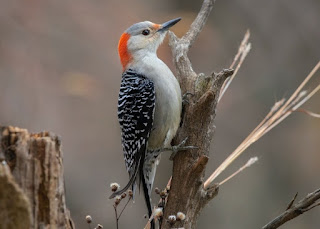Biomimetics and Woodpecker Brain Cushions
Here in Upstate New York (a dismissive name because The City is the center of the universe, so the rest of the state is Upstate), we like our feathered visitors. A few kinds of woodpeckers and their kin show up in our area.
We see the Downy much more than the Hairy, and my wife has a special fondness for the Red-bellied. Although in the area, Pileated Woodpeckers are rare for us to see. Creationists point out that woodpeckers are excellent examples of the Creator's handiwork and refute Darwinism. They are also involved in biomimetics.
 |
| Red-bellied Woodpecker, Pexels / Hal Moran |
Back to Woody. He smacks his beak into trees, telephone poles, and other things in search of succulent morsels. Woodpeckers also do this thing called drumming, which is less for seeking food and more for signaling. It does not hurt them because their powerful beaks are kept from smashing in their skulls, and there is more to it than that. Scientists are finding out how the system works, and are attempting to apply the principles to improve helmets in biomimetics. Are they giving credit to the Creator? Asking for a friend.
The long-term dangers of concussions have rocked the world of contact sports, especially among American youth football leagues. In addition to causing temporary unconsciousness, concussions can damage brain cells and disrupt the brain’s chemistry. Repeated concussions may lead to a condition known as chronic traumatic encephalopathy, or CTE, a degenerative disease that begins with headaches and disorientation, followed by memory loss, erratic behavior, impeded speech, and finally dementia.
. . .
In recent years, high-tech sports helmets have come a long way to protect the brain. A key inspiration has come from an unlikely source. Deep in the forest, a small creature with a tiny brain and spongy skull has shed light on how to build lightweight, superhuman brain gear.
To read the entire article or listen to the audio, bang on the link to "Birdbrained Breakthrough."
 |
| You can be a part of Question Evolution Day, no charge, no sign-up! |